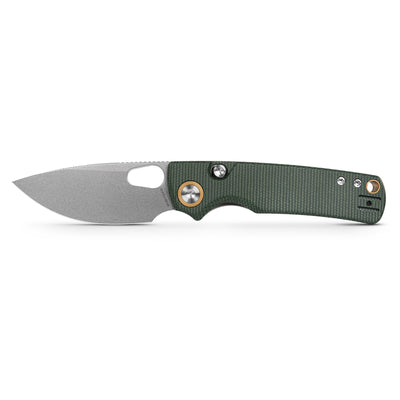Unlock the Secret to Choosing the Perfect Folding Pocket Knife!
Folding pocket knives have gained immense popularity among outdoor enthusiasts, campers, and everyday users alike. Their compact design and versatility make them indispensable tools for a variety of tasks. Whether you need a reliable knife for cutting rope during a camping trip or a handy tool for opening packages at home, selecting the right folding pocket knife is crucial to meet your specific needs. With so many options available, it can be overwhelming for buyers to choose the best one. Understanding the features and characteristics that make a folding pocket knife great is essential for making an informed decision.

Understanding Folding Pocket Knives
Folding pocket knives come in various types, each designed for specific uses and user preferences. The most common types include traditional slip joints, modern lockbacks, and liner locks. Unlike fixed blade knives, which offer more stability and strength, folding knives are designed to be compact and portable. Their folding mechanism allows the blade to be safely tucked away when not in use, minimizing the risk of accidental injury. One of the primary advantages of folding knives is their convenience; they can easily fit into pockets, bags, or even on a keychain. Additionally, many folding knives feature safety mechanisms that prevent accidental opening, making them suitable for users of all ages. I remember a friend who always carried a folding pocket knife on hiking trips, emphasizing how its portability allowed him to tackle various tasks effortlessly, from preparing snacks to setting up camp.
Key Features to Consider
When selecting the best folding pocket knife, several key features should be taken into account. First, consider the blade material; high-carbon stainless steel is often preferred for its durability and resistance to corrosion. The blade shape also plays a significant role; drop point blades are versatile for general use, while tanto blades excel in piercing tasks. The locking mechanism is crucial for safety; options like liner locks and frame locks provide secure closure, ensuring the blade won't accidentally fold during use. Additionally, the handle material affects grip and comfort. Materials such as G10 and aluminum offer a robust feel, while wood provides a classic aesthetic. Weight is another important factor; a lighter knife may be more convenient for everyday carry, while a heavier model might be better suited for rugged tasks. It's essential to balance these features according to your intended use. I once borrowed a friend's folding knife with a G10 handle while camping, which provided a secure grip even when wet, illustrating how the right features can enhance usability.
Tips for Selecting the Right Knife
Choosing the right folding pocket knife involves assessing your needs and preferences. Start by considering the intended use; if you plan to use the knife for everyday tasks, a compact and lightweight option may be ideal. For outdoor activities like camping or hiking, a more robust knife with a durable blade and reliable locking mechanism is recommended. Budget is another important aspect; while it’s tempting to go for the cheapest option, investing in a quality knife can save you money in the long run. Explore different designs to find what feels comfortable and suits your style. Pay attention to how the knife fits in your hand and whether you prefer a smooth or textured grip. Lastly, don’t hesitate to seek recommendations from friends or online reviews to gauge reliability and performance. I recall when a friend bought a folding knife based on user reviews, and he was thrilled with its performance on a recent fishing trip, which reinforced the importance of informed decision-making.
Maintenance and Care
Proper maintenance is crucial for ensuring the longevity and functionality of your folding pocket knife. Regular cleaning is essential; dirt and debris can impede the folding mechanism and dull the blade. Use a soft cloth to wipe the blade after each use and occasionally disassemble the knife to clean the internal components. Sharpening the blade is another vital aspect of care; using a whetstone or a sharpening tool will keep the blade in optimal condition. Remember to apply a few drops of lubricant to the pivot point to ensure smooth opening and closing. Lastly, store your knife in a dry place to prevent rust and corrosion. By following these simple care tips, you can extend the life of your knife and ensure it’s always ready for action.
Making the Right Choice for Your Folding Pocket Knife
In summary, selecting the best folding pocket knife requires a thoughtful understanding of its features and your personal needs. From the blade material and shape to the locking mechanism and handle design, each aspect plays a significant role in the knife's usability and safety. By considering your intended use, budget, and personal preferences, you can make an informed choice that will serve you well for years to come. Remember that a well-maintained knife can be a lifelong companion, ready to assist you in a variety of situations. So, take your time, explore your options, and unlock the potential of finding the perfect folding pocket knife!








